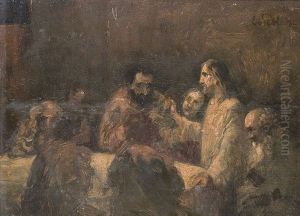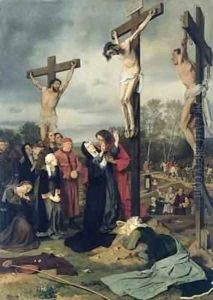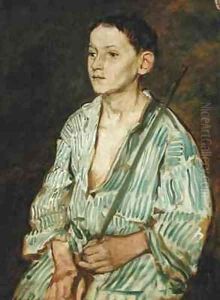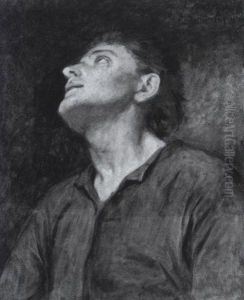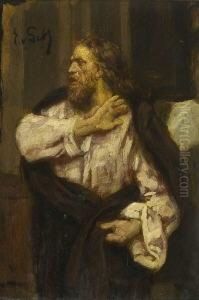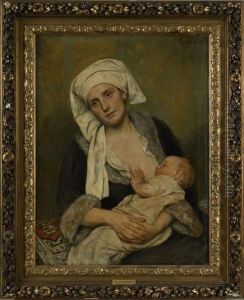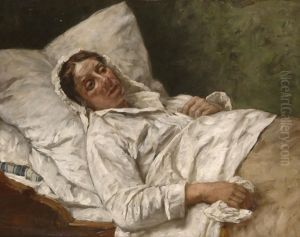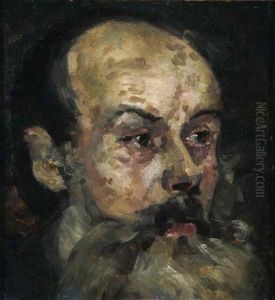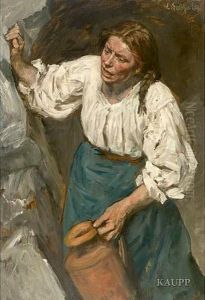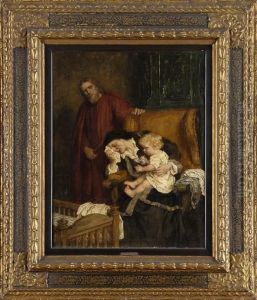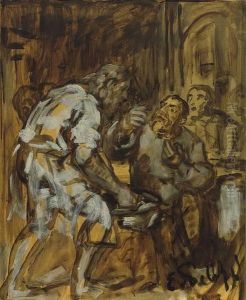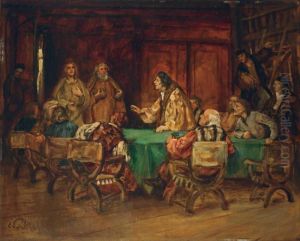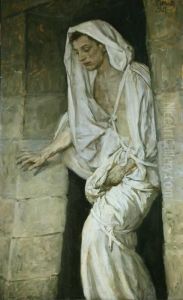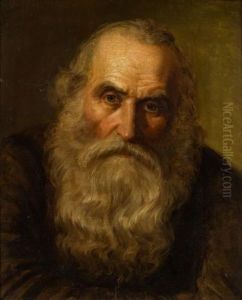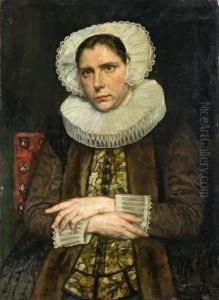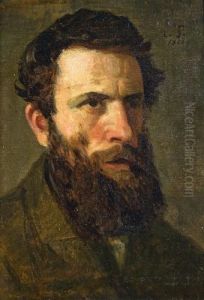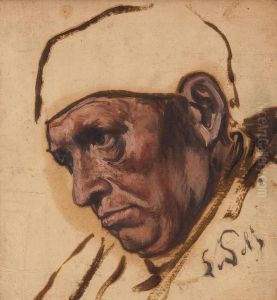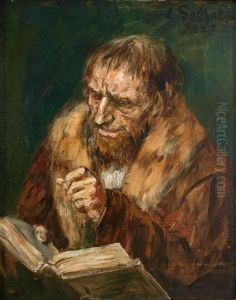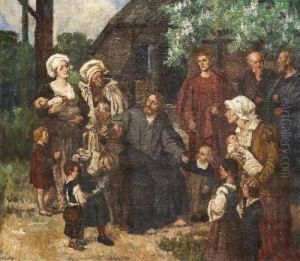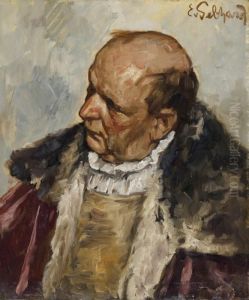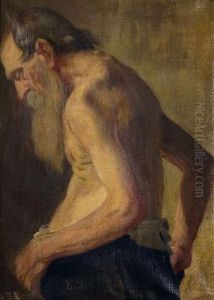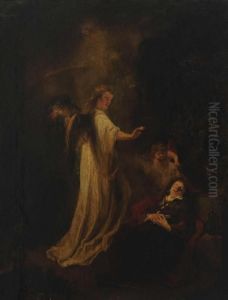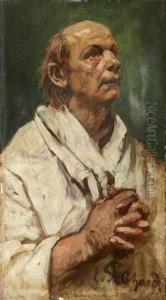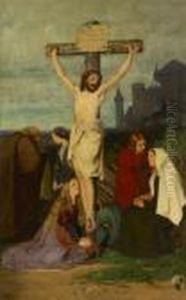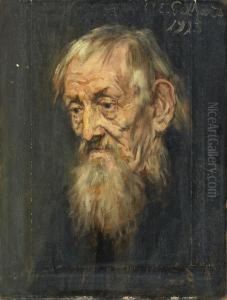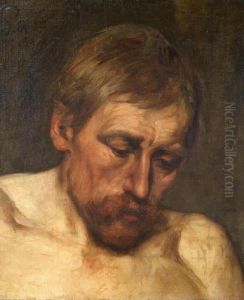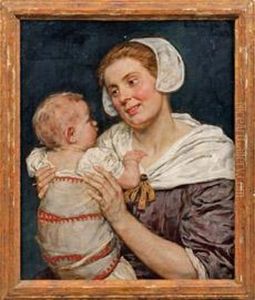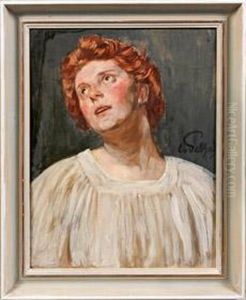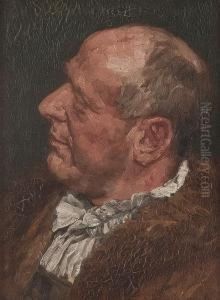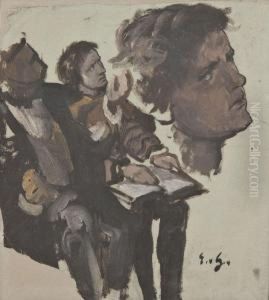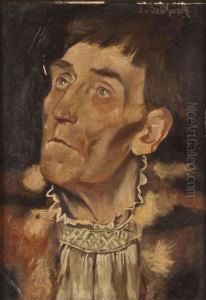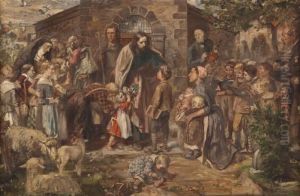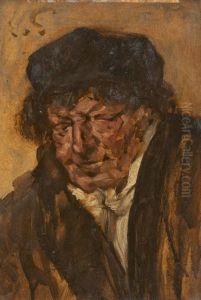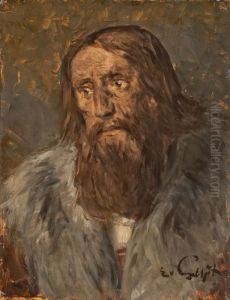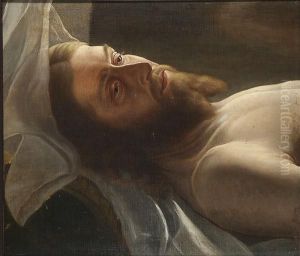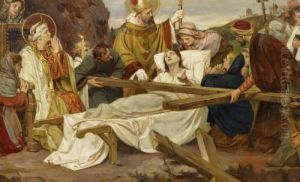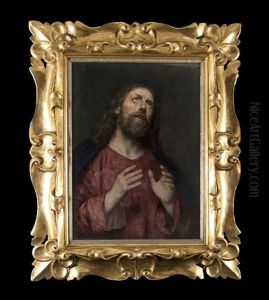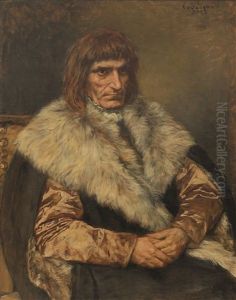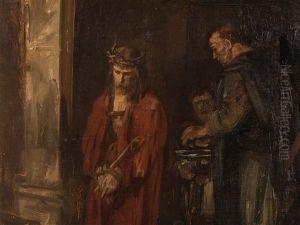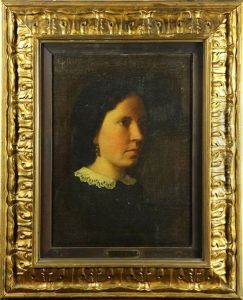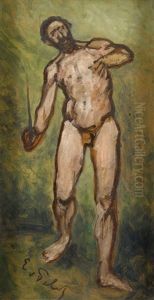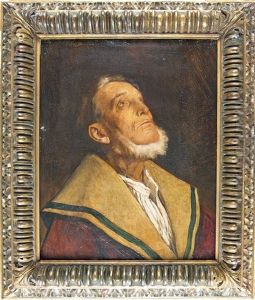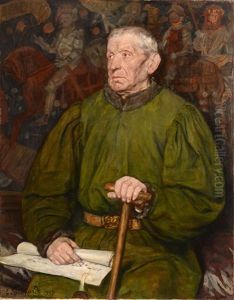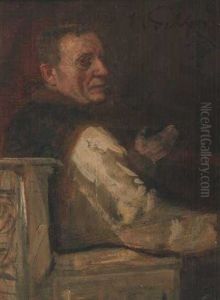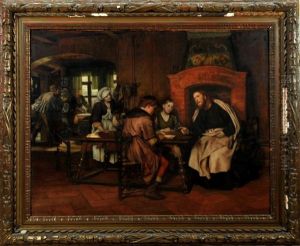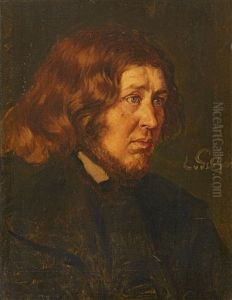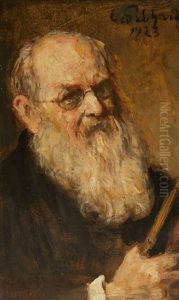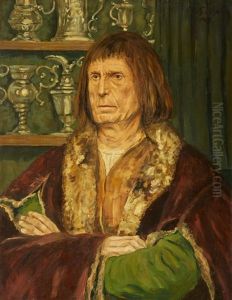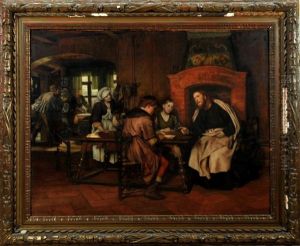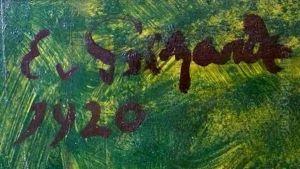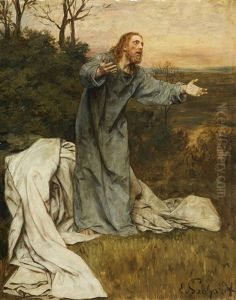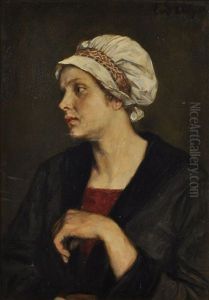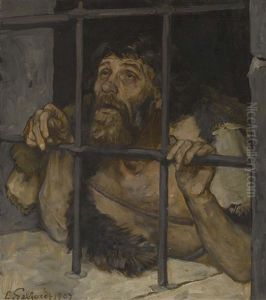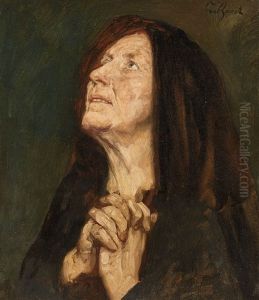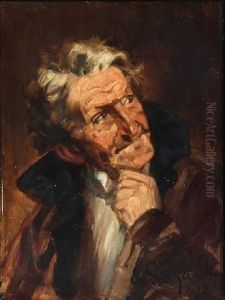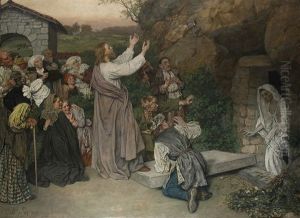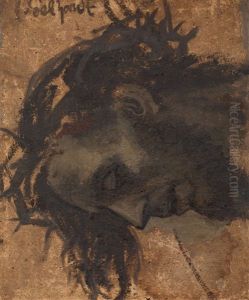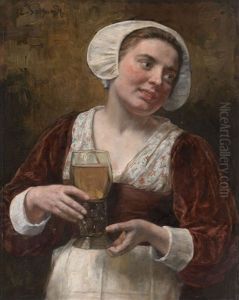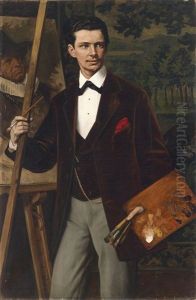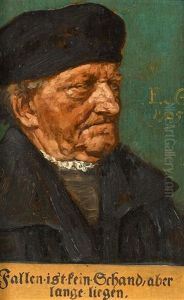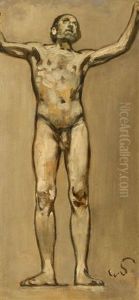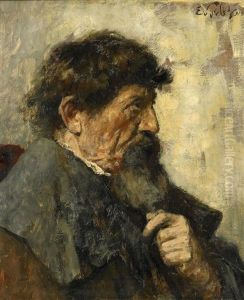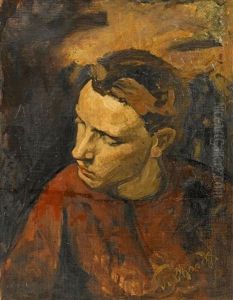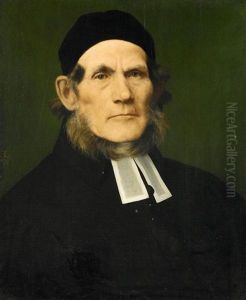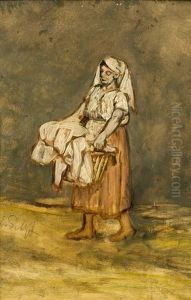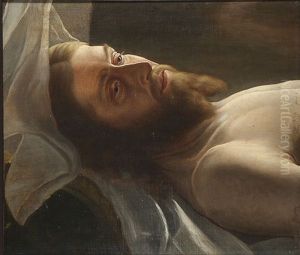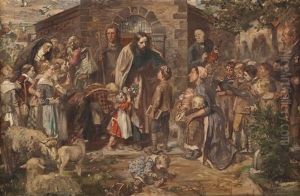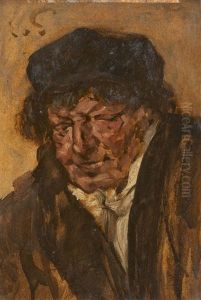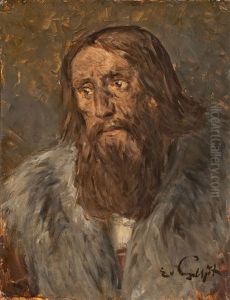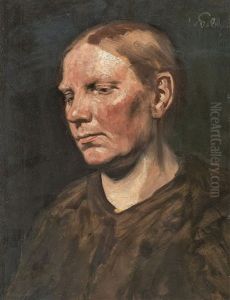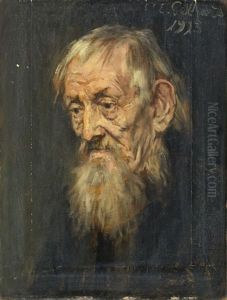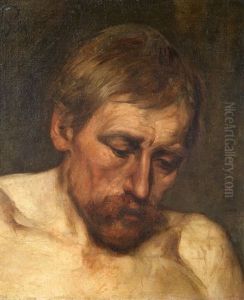Eduard Karl Franz von Gebhardt Paintings
Franz Karl Eduard von Gebhardt, commonly known as Eduard von Gebhardt, was a distinguished Baltic German painter primarily known for his contributions to religious art and his adherence to the Düsseldorf school of painting. Born on November 13, 1838, in Järva-Jaani, then part of the Russian Empire (today in Estonia), Gebhardt grew up in a Baltic German community and would later come to be considered one of the most significant artists of his time in the area.
Gebhardt's early exposure to art began with his father, who was a painter. He pursued his formal education at the Düsseldorf Academy of Arts, where he was influenced by the teachings of Wilhelm von Schadow, who emphasized the importance of Christian subjects and historical accuracy. Gebhardt took these lessons to heart, and his works often reflected a deep religious sentiment fused with a meticulous attention to historical detail.
Throughout his career, von Gebhardt became known for his religious scenes, especially those depicting the life and death of Jesus Christ. His style blended the spiritual narrative with realism, a trademark of the Düsseldorf school. Some of his notable works include 'The Raising of Lazarus' (1865) and 'The Entombment of Christ' (1864), which exemplify his use of dramatic light and shadow to convey the depth of human emotion and faith.
Eduard von Gebhardt's contribution to art was not just limited to his paintings. He was also an influential professor at the Düsseldorf Academy from 1873 until his retirement in 1910, where he taught and mentored a new generation of artists. His teaching style perpetuated the values of the Düsseldorf school, emphasizing the importance of historical painting and spiritual themes.
Von Gebhardt's art received significant recognition during his lifetime. He was awarded numerous honors, including the Order of the Red Eagle and the Order of the Crown. His works were widely exhibited and collected, and they continue to be of interest to those studying religious and historical painting of the 19th century.
Eduard von Gebhardt passed away on June 23, 1925, in Düsseldorf, Germany, leaving behind a legacy of profound religious artworks that continue to be appreciated for their emotional depth and technical mastery. His paintings remain on display in various museums and galleries, serving as a testament to his skill and devotion to capturing the essence of Christian narratives.
